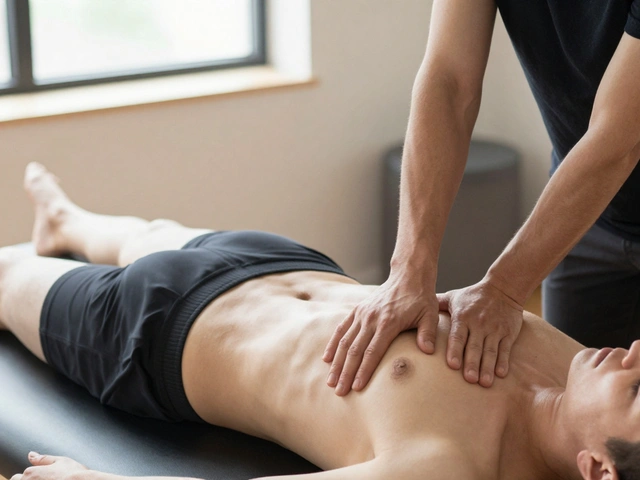Psychophysical Healing: Restore Body and Mind
Psychophysical healing links movement, touch, and awareness to help your body and mind recover together. If you feel stuck in pain, tightness, or constant stress, this approach treats the whole person—not just one symptom. It covers hands-on work like Rolfing, Hellerwork, and Hilot, plus movement methods like Feldenkrais and bioenergetics. You get practical tools that change how you move, breathe, and feel.
How it works — simple and real
These therapies target patterns your body learned over time. A Rolfer or Hellerwork practitioner works on fascial alignment and posture so your skeleton and muscles support you better. Feldenkrais teaches gentler, mindful movements to rebuild coordination. Ortho-Bionomy uses small, pain-free positions to trigger your body's self-correction. Touch-based methods—Amma, Lomi Lomi, stone therapy, and acupressure—calm the nervous system and ease muscle guarding. Together, they lower pain signals, restore motion, and reduce anxiety.
Think of it like reprogramming habits. Instead of forcing muscles, the work helps your nervous system choose easier ways to move. That often means less pain, better sleep, and clearer thinking. Palliative massage and blind massage show how careful touch eases suffering and brings comfort when hard medical answers aren’t available.
Choose the right approach for you
First, pick a clear goal: pain relief, better posture, stress reduction, or deeper relaxation. If you want structural change for chronic back issues or scoliosis, Rolfing or Hellerwork could help. For gentle, nervous-system-friendly options, try Feldenkrais or Ortho-Bionomy. For fast relief of muscle knots, look into trigger point therapy or acupressure. If you want cultural or ritual-based healing, explore Hilot, Kahuna, or Lomi Lomi.
Ask practitioners about training, session length, and what a typical series looks like. A good therapist will explain risks, expected changes, and at-home practices. Check for client stories or reviews to see real results. If you have health conditions, get a quick thumbs-up from your doctor first.
Want simple at-home steps? Start with 10 minutes of mindful breathing before bed, a short Feldenkrais lesson online, or self-acupressure for headaches. Use a warm stone or heat pack for tight areas, then gently stretch into the space you create. Small, consistent moves beat occasional intense effort.
Psychophysical healing isn’t magic, but it’s practical. It gives tools that change how your body holds tension and how your mind reacts to stress. If you’re curious, try one session from a different approach and note how your movement and mood shift over a week. You’ll start to see patterns—and how to change them.
Explore articles on AIST Massage Triumphs to learn specifics: Feldenkrais tips, Hellerwork case stories, trigger point fixes, and cultural methods like Hilot. Pick one idea to try this week and pay attention. Your body talks—this work helps you listen and respond better.

Trager Approach: Harnessing Gentle Movements for Ultimate Stress Management
Explore the Trager Approach, a unique therapy that utilizes gentle rocking and shaking movements to promote relaxation and alleviate stress. Discover how these motions can lead to significant improvements in physical and mental well-being. This article delves into the principles behind Trager Therapy, practical sessions, and tips for integrating its methods into your daily life for enhanced stress management and overall health.
Categories
- Health and Wellness (148)
- Alternative Therapies (86)
- Massage Therapy (40)
- Travel and Culture (15)
- Beauty and Skincare (9)
- Holistic Health (8)
- Health and Fitness (5)
- Spirituality (5)
- Other (2)
- Personal Development (2)
Popular Articles

Unleashing the Power of Rolfing for Body Balance
Dec, 14 2025


